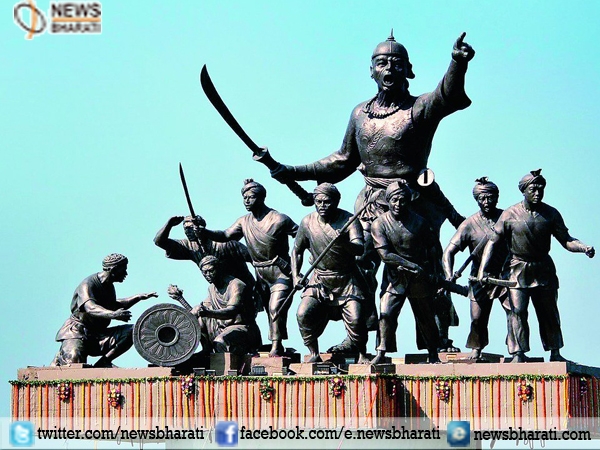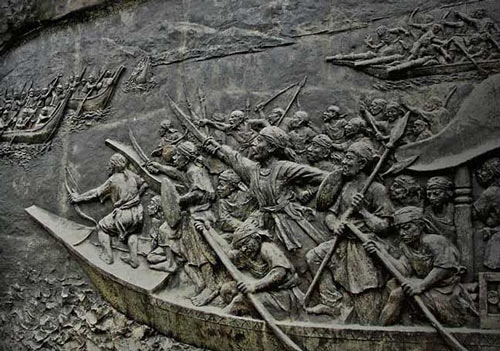Bowing down to legendary warrior Lachit Borpukhan who defeated Mughals from capturing North East
Guwahati, November 24: Mughals always dominated in the history who also got defeated by Bravehearts like Chhatrapati Shivaji Maharaj, Maharana Pratap Singh, Rani Lakshmi Bai, Lachit Borpukhan and many more. Wait! Lachit Borpukhan sounds new name to you? Well Lachit Borpukhan was Legendary Assamese Ahom General who refused to let the Mughal rule the North-East. Today of every year is celebrated as Lachit Divas in Assam where they commemorate the heroism of Lachit Borphukan.

The Mughal Army attacked the Ahom Kingdom in the Battle of Itakhuli in 1682 that saw a decisive Ahom victory and resulted in the Mughal retreat. While we remember the valour of others, there are some who get left out. Lachit Borphukan is one such legend who did not find his rightful place in our history texts.
Lachit Divas marks the birth anniversary of the legendary commander of Ahom army Lachit Borphukan, observed across the Assam. Governor Prof Jagdish Mukhi greeted the people of Assam on the eve of Lachit Divas. In a message, Prof Mukhi said, “Lachit Borphukan was a great commander and a patriot who fought valiantly for the cause of his motherland. His love for the motherland and his supreme sacrifice is a perfect example of a true leader.”
Was born to Momai Tamuli Borborua, the first Borborua ( Governor of upper Assam and Commander-in-Chief of the Ahom army) under Prataap Singha, Lachit Borphukan was educated in humanities, scriptures, and military skills; he was first given position of Soladhara Barua, the scarf bearer of the Ahom swargdeo.

The Battle of Saraighat was the example which carved the name of Lachit Borpukhan. What happened was Aurangazeb was furious when Lachit Borphukan recaptured Guwahati. To the point that he allotted a massive army of 4000 troopers, 30,000 infantry, 21 Rajput chiefs with their contingents, 18,000 cavalries, 2000 archers and 40 ships. He appointed Ram Singh of Amber to lead the Mughal forces and recapture Guwahati.
Lachit Borphukan made the entry on land impossible. The Mughals were experts on land warfare. They conquered the entire Indian subcontinent on horsebacks. Lachit Borphukan knew he had no chance of thwarting a Mughal attack on land. So he built mud embankments to halt.
The Mughal army was the weakest on waters and Lachit exploited this vulnerability. Although the Mughal army had 40 ships, it did not have much experience in water warfare and Lachit knew this. On the other hand the Ahom warriors were very skilled at river warfare, since it was their territory.
Lachit made a strategic hold at Guwahati on the Brahmaputra River. When the large Mughal contingent approached the Ahom army, Lachit strategically retreated, giving the Mughal an idea that his army was somehow afraid. His final stand would be Guwahati, on the Brahmaputra river. He regularly harassed the Mughal Army with Guerilla Tactics. One such tactic failed and the Ahom lost 10,000 men.
One such battle failed and the Mughal cavalry butchered 10,000 Ahom warriors. Ram Singh made a proposal to the Ahom king Chakradwaj Singha to surrender to his terms. The proposal was rejected outright. Lachit Borphukan fell ill and the Ahom almost lost all hope. Lachit Borphukan put aside his illness and led from the front
During the last stand, the Mughals loaded all the ships with cannons and warriors for the final assault. Lachit Borphukan led from the front, despite his illness employing all the tactics he had learnt during his life. The Mughal admiral Munnawar Khan was shot dead from the rear
The Ahom army assaulted the Mughals from the front and the rear, which caught them off-guard. The Mughal admiral was shot in the back during this assault. With no commander to supervise the troops, the Mughal army fell into disarray. Lachit Borphukan gave them a chase until they left the Ahom territory. The Northeast remained under Ahom rule and the Mughals failed to capture it because of Lachit’s valiant efforts and leadership.